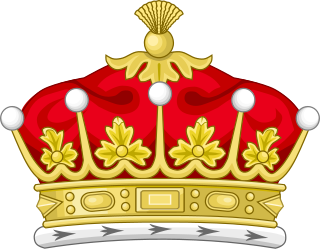
Earl of Huntingdon is a title which has been created several times in the Peerage of England. The medieval title was associated with the ruling house of Scotland.

Baron Hastings is a title that has been created three times. The first creation was in the Peerage of England in 1290, and is extant. The second creation was in the Peerage of England in 1299, and became extinct on the death of the first holder in c. 1314. The third creation was in the Peerage of England in 1461, and has been in abeyance since 1960.

Baron Hungerford is a title in the Peerage of England. It was created on 7 January 1426 for Walter Hungerford, who was summoned to parliament, had been Member of Parliament, Speaker of the House and invested as Knight of the Order of the Garter before and was made Lord High Treasurer one year before he became a peer. The man who would later succeed as third baron was created Baron de Moleyns on 13 January 1445 by writ of summons; both titles merged when he succeeded as Baron Hungerford in 1459. The third baron was attainted and the peerage forfeit in 1461. This attainder was reversed in 1485 for the then 4th baroness of Hungerford, and so it came into the Hastings family of Earls of Huntingdon until 1789, when it came into the Rawdon(-Hastings) family of the Marquesses of Hastings until 1868 when it fell into abeyance. This abeyance was terminated three years later for a member of the Abney-Hastings family and an Earl of Loudoun. In 1920 it again fell into abeyance, which was terminated one year later for the Philipps family of the Viscounts of St Davids where it has remained since.

Francis Edward Rawdon-Hastings, 1st Marquess of Hastings,, styled The Honourable Francis Rawdon from birth until 1762, Lord Rawdon between 1762 and 1783, The Lord Rawdon from 1783 to 1793 and The Earl of Moira between 1793 and 1816, was an Anglo-Irish politician and military officer who served as Governor-General of India from 1813 to 1823. He had also served with British forces for years during the American Revolutionary War and in 1794 during the War of the First Coalition. In Ireland, he was critical of the policy of coercion used to break the United Irish movement for representative government and national independence. He took the additional surname "Hastings" in 1790 in compliance with the will of his maternal uncle, Francis Hastings, 10th Earl of Huntingdon.
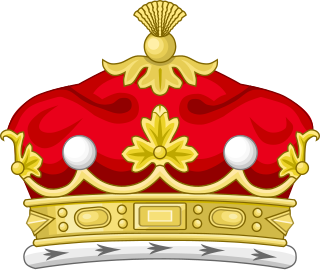
Marquess of Hastings was a title in the Peerage of the United Kingdom. It was created on 6 December 1816 for Francis Rawdon-Hastings, 2nd Earl of Moira.

Henry Hastings, 3rd Earl of Huntingdon, KG, KB was an English Puritan nobleman. Educated alongside the future Edward VI, he was briefly imprisoned by Mary I, and later considered by some as a potential successor to Elizabeth I. He hotly opposed the scheme to marry Mary, Queen of Scots, to the Duke of Norfolk, and was entrusted by Elizabeth to see that the Scottish queen did not escape at the time of the threatened uprising in 1569. He served as President of the Council of the North from 1572 until his death in 1595.
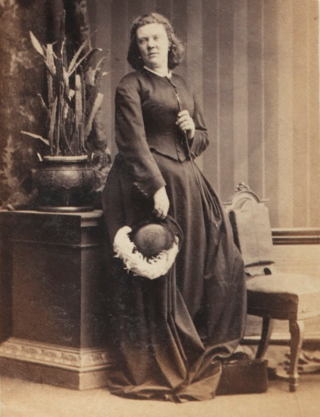
Edith Maud Rawdon-Hastings, 10th Countess of Loudoun was a Scottish peer. She died aged 40 after caring for Rowallan Castle. Sir George Gilbert Scott designed an Eleanor Cross style monument to her which was erected in Ashby de la Zouch.
John Rawdon, 1st Earl of Moira, known as Sir John Rawdon, Bt, between 1724 and 1750 and as The Lord Rawdon between 1750 and 1762, was an Irish peer.

Francis Hastings, 2nd Earl of Huntingdon, KG was the eldest son of George Hastings, 1st Earl of Huntingdon and Anne Stafford, Countess of Huntingdon, the ex-mistress of Henry VIII.
British history provides several opportunities for alternative claimants to the English and later British Crown to arise, and historical scholars have on occasion traced to present times the heirs of those alternative claims.

Selina Hastings, Countess of Huntingdon was an English Methodist leader who played a prominent part in the religious revival of the 18th century and the Methodist movement in England and Wales. She founded an evangelical branch in England and Sierra Leone, known as the Countess of Huntingdon's Connexion.

George Augustus Francis Rawdon-Hastings, 2nd Marquess of Hastings, styled Lord Rawdon from birth until 1817 and Earl of Rawdon from 1817 to 1826, was a British peer and courtier.
Francis Hastings may refer to:
Francis Hastings, Lord Hastings was the son of George Hastings, 4th Earl of Huntingdon and Dorothy Port. He married Sarah Harington, daughter of Sir James Harington and Lucy Sydney. They had five children:
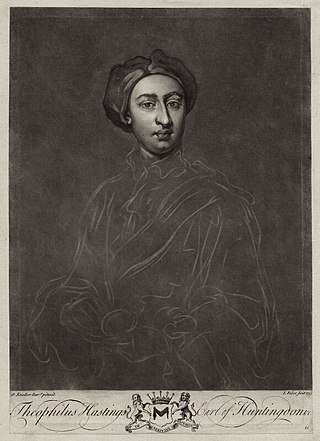
Theophilus Hastings, 9th Earl of Huntingdon was the son of Theophilus Hastings, 7th Earl of Huntingdon and Mary Frances Fowler.
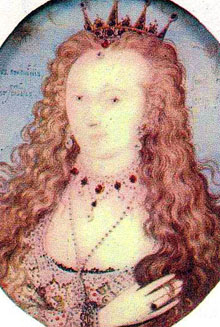
Elizabeth Hastings, Countess of Huntingdon, formerly Lady Elizabeth Stanley, was an English noblewoman and writer who was third in line of succession to the English throne. She was the wife of Henry Hastings, 5th Earl of Huntingdon. She was also styled Lady Hastings of Hungerford and Lady Botreaux as her husband held both of these titles in addition to the Earl of Huntingdon.
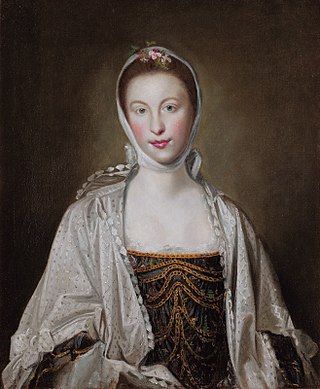
Elizabeth Rawdon, Countess of Moira in the Peerage of Ireland was a political hostess, literary patron and antiquarian. She was born at Donington Park, Leicestershire, England and died at Moira, County Down, Ireland. While declaring herself a "firm aristocrat", in Ireland she included in her circle men and women committed to the republican cause of the United Irishmen.
Hans Francis Hastings, 12th Earl of Huntingdon was a British Royal Navy officer and peer. He was sometimes known by his second Christian name, Francis, Earl of Huntingdon.
Paulyn Reginald Serlo Rawdon-Hastings, 3rd Marquess of Hastings, styled Earl of Rawdon from birth until 1844, was a British peer and officer in the British Army.












